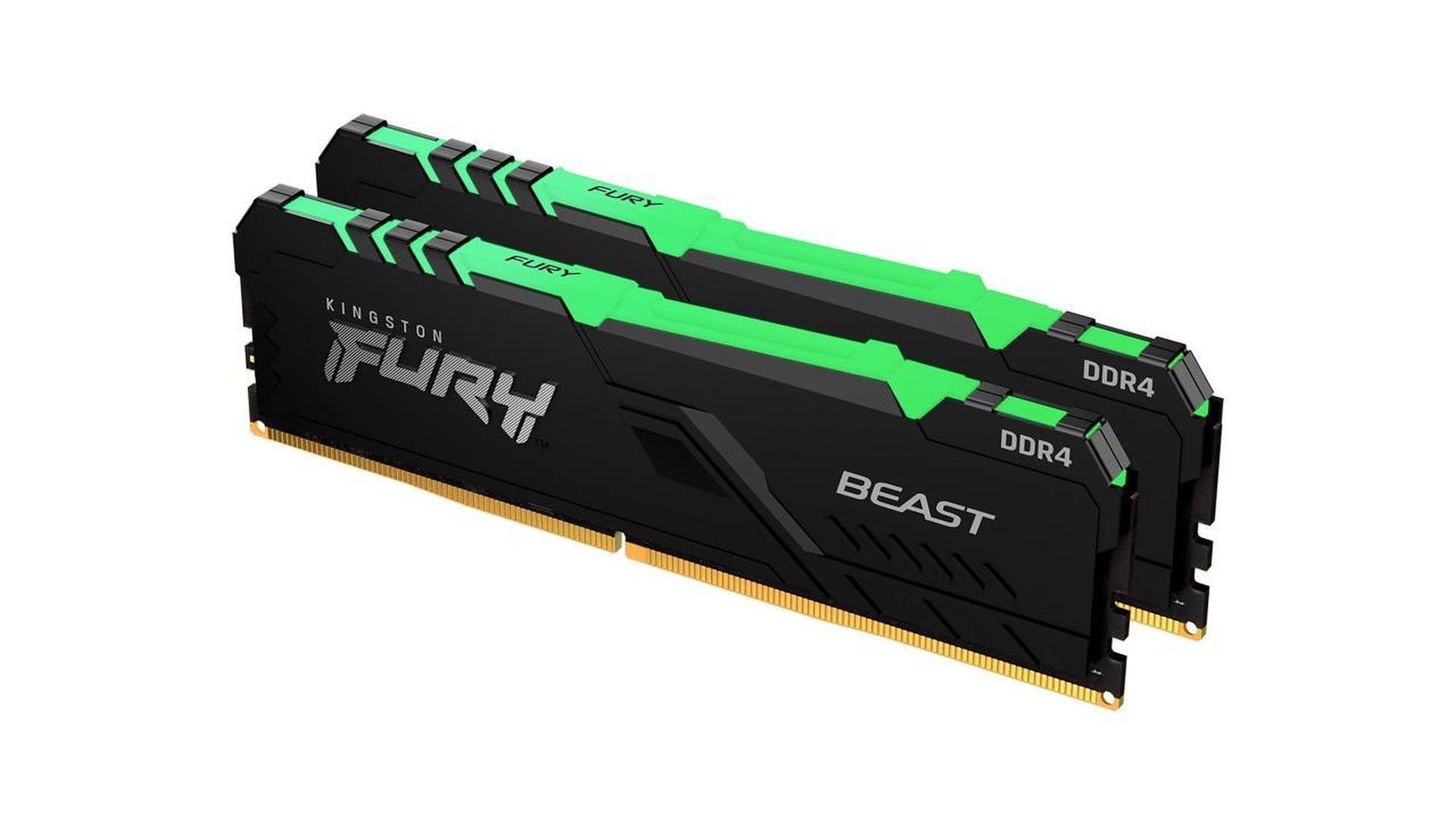Review: Kingston FURY Beast RAM is a Solid PC Upgrade Particularly for Creators
When I built my computer a couple of years ago, I decided to outfit my build with two 8GB sticks of RAM for a total of 16GB. They were clocked at 3200MHz and they got the job done for the most part. However, more and more games seem to be demanding more RAM with some even saying you should have 32GB. In addition, I’m doing a little more creation like video editing which has been sluggish. Thankfully, Kingston came to my rescue.
Kingston makes high quality memory and storage products like the recently released FURY Renegade Pro DDR5 RAM modules. Sadly, my computer doesn’t support DDR5 memory and I don’t have the funds to upgrade my CPU and motherboard to go with testing those modules. However, Kingston was kind enough to send me a 32GB kit of their FURY Beast DDR4 RGB RAM modules clocked at 3600 MT/s. I’ve been running the RAM in my computer for a few weeks now and thought I’d share my thoughts and opinions about upgrading. For reference, my old RAM is the Team T-FORCE VULCAN TUF Gaming Alliance set. My CPU is the AMD Ryzen 5 3600 and my GPU is an AMD RX 6800XT.
Before I get to daily use with twice as much (and faster) RAM, let’s talk about some benchmarks I ran. I ran each of the tests in three different configurations: 2x8GB, 1x16GB, and 2x16GB. On PugetBench tests for Photoshop, each configuration scored 769, 747, and 941 respectively. In Premiere Pro, they scored 473, 428, and 475 respectively. It should be noted that I went to run the After Effects test and it crashed in both 16GB configurations and only when I went to 32GB was it able to complete and did so with a score of 679.
In order to more aptly test After Effects, I found another test on YouTube from EQUILOUD that I used to test all three configurations. There are two parts to the test and interestingly enough when I went from 2x8GB to 1x16GB, the first part dropped by about 11 minutes but the second part took roughly the same amount of time. Then, when I went to 2x16GB, the first test was only a little faster, but the second dropped down from about 6 minutes to 7 seconds!
How does the jump from 16GB to 32GB of RAM impact gaming? Well, it wasn’t as big of a deal as I would’ve hoped. Granted, I don’t have some of the big new games that want 32GB like Forspoken or Hogwarts Legacy, so I ran the built-in benchmark for Assassin’s Creed Valhalla and Hitman 3. The average number of frames per second didn’t improve by too much in either game however, the framerate became more consistent with the 2x16GB configuration. For Hitman 3, I ran the Dartmoor benchmark as well as the interactive Dartmoor benchmark. You can see all of the gritty details below.
Hitman 3 Interactive Benchmark:
2x8GB
Average framerate : 135.4 FPS
Minimum framerate : 110.5 FPS
Maximum framerate : 145.4 FPS
1% low framerate : 77.8 FPS
0.1% low framerate : 48.5 FPS
1x16GB
Average framerate : 113.9 FPS
Minimum framerate : 76.9 FPS
Maximum framerate : 145.4 FPS
1% low framerate : 55.9 FPS
0.1% low framerate : 43.2 FPS
2x16GB
Average framerate : 140.9 FPS
Minimum framerate : 118.1 FPS
Maximum framerate : 145.5 FPS
1% low framerate : 85.3 FPS
0.1% low framerate : 72.4 FPS
In real world experiences, what I’ve found is that my computer just performs better. I don’t have to worry so much about how many browser tabs I have, how many programs I have in the background like Steam and Epic Games Store, and things just run better. I recently edited a brief video for YouTube and it didn’t freeze up at all while the 2x8GB configuration would while I was working on it. When I play various games including Guild Wars 2, I am still noticing much more consistent frame rates.
Overall, I’m really glad to have been able to upgrade my RAM and the Kingston FURY Beast modules have been great. They do also offer a non-RGB model and if you have a DDR5-compatible motherboard they have models for you as well. The DDR4 version rated at 3600 MT/s is available from your favorite retailers starting at about $60 if you’re okay with not having RGB RAM.










